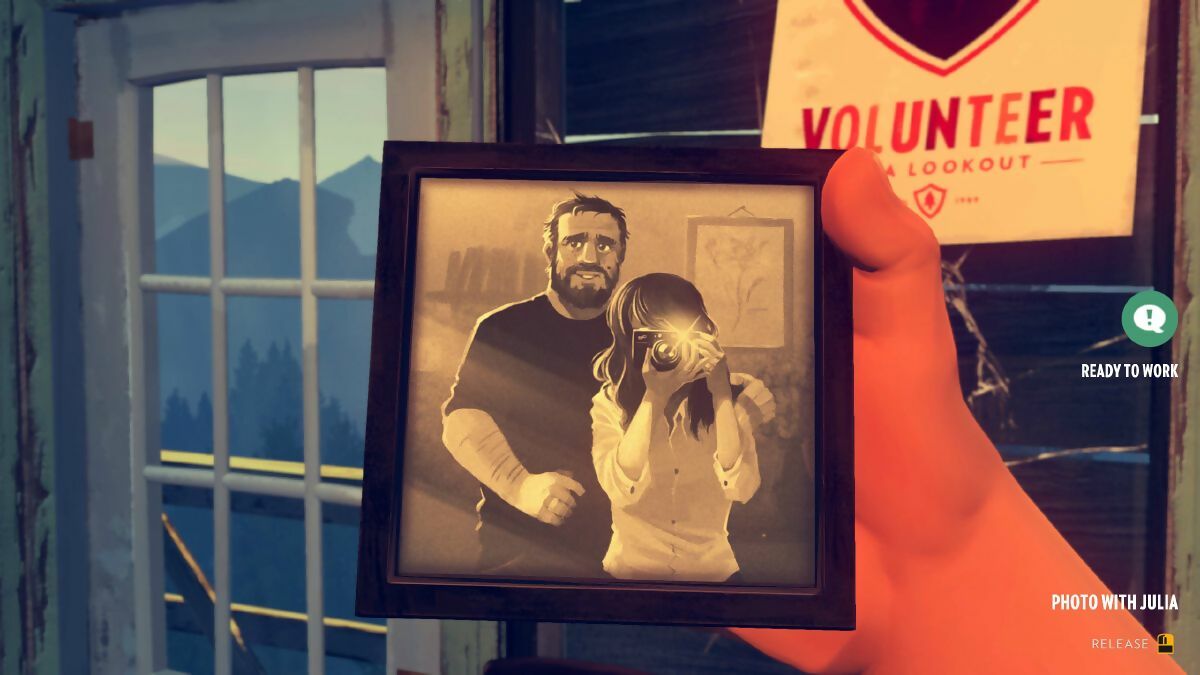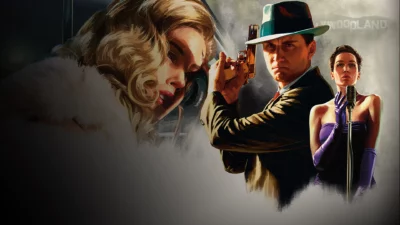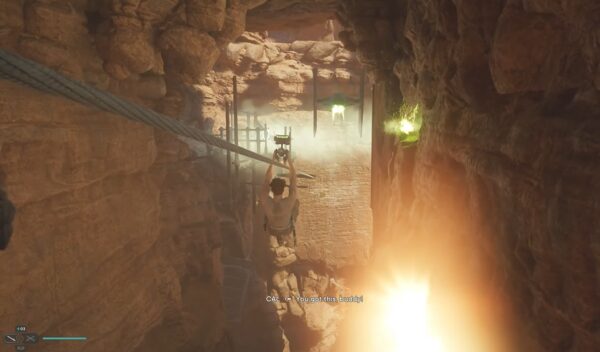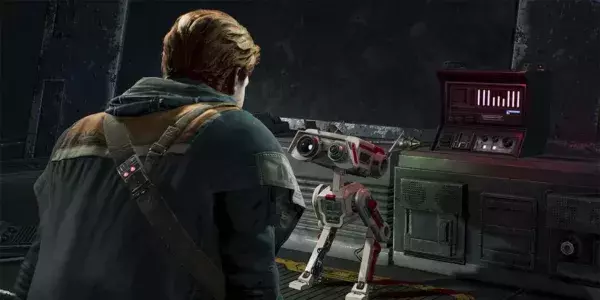
Firewatch is a game about overcoming the detailed, personal baggage of a man named Henry. Mechanically, the main game will have you simultaneously controlling interactive conversations over a radio while navigating 3D environments, and so for their intro sequence, developers Campo Santo strip that gameplay back to its two pillars: interactive fiction, and first-person exploration. They deliver a masterclass in efficient, impactful narrative design, so in order to illustrate these techniques, I’ve mapped the entire sequence below (you can also see a more detailed version here), to which I’ll be referring frequently. Let’s dive in!
Choose-your-own
Firewatch opens with nothing more than text on the screen, which you advance through by selecting what Henry does next. At first, you only have a single option, but soon you encounter choices between two possible actions which ‘branch’ down different pathways. For example, in Choice 1, the player must decide between two ways to break the ice with Julia, protagonist Henry’s future wife, in a bar. They can either open with a compliment, or they can ask about her degree. It’s a small choice, and each will give a slightly different passage of text on the next screen. This teaches the player that a) you must choose, and b) your choices will alter Henry’s path. This is interactive fiction reduced to its most simple.
The next four decision points introduce slightly more consequential choices. Now they sometimes stick around (like choosing a dog) or are emotionally heavy (like choosing whether to yell at or ignore Julia). The branches are very short, rarely lasting longer than a passage before the narrative paths converge. One such initially innocent dilemma is Choice 5, in which Julia asks you to strike a pose for her to draw: flex like He-Man, or frolic like a Victoria’s Secret model. We’ll come back to that.

The presentation is stunningly simple: beautiful, readable, large text, on an impressionistic coloured background.
Ramping up
As the 3D Interludes teach movement and make us wonder where Julia is, Choices 6–8 become weighty, dealing with violence, major life decisions, and serious illness. Through these choices, the player is learning not only how interactive narrative works, but also how to role-play Henry. Every branch point is perfectly poised to have the player express not their own, but Henry’s personal way of responding to the situation: “You’re playing as a specific guy, with a specific life,” says Jake Rodkin, one of the game’s writers. In Choice 7, when Julia is offered a fantastic job across the country, your only choices are to a) convince her to stay or b) make her commute. You absorb that sometimes Henry is selfish, and so must you be if you’re going to play him. “You don’t have to learn it through his dialogue,” says Rodkin. “You made the choices that brought him where he is today.”

This is about half the size of the raw map, which details every passage.
No good options
Then comes the intro’s climax. In Interlude 4, Henry picks up a journal and opens it to Julia’s drawing of him. Depending on your earlier choice, the drawing can be either burly or burlesque. It hits the player: your narrative choices will impact Henry’s present, permanently. It’s not just differently flavoured text passages, and although the teaching example here is a silly drawing, what follows is anything but. Choice 9 lays on you the most traumatic dilemma yet, and the only ‘true’ branching point in the whole intro. Julia’s dementia is unbearable: do you put her in a home, or continue her care yourself? As if it wasn’t a tough choice already, we’ve just been taught that this could well have lasting impact. Later, the repercussions will affect both Julia’s present-day location and Henry’s motivation for taking the fire-watching job.
So what do we learn from Firewatch’s intro? Well, if you ask me, it succeeded not by allowing the player to express themselves, but by making players express personalised variances of a very specific, bitter-sweet character. It gets you to engage seriously with that character by taking its tutorialisation seriously, building to and earning its big, tragic branching point methodically, as laid bare opposite.
Internal Comms
The Twine introduction below was originally made as an internal replacement for unwieldy character docs, as Firewatch developer Sean Vanaman felt it would be better to give the team something to play in order to understand who Henry was. Later, they were dealing with problems where the player didn’t feel they knew how to respond as Henry, and at some point, the idea to make the Twine story an intro to the main game was born.

The intro was first made in Twine; Sean Vanaman carefully organised his passages to help structure the tutorialisation.





